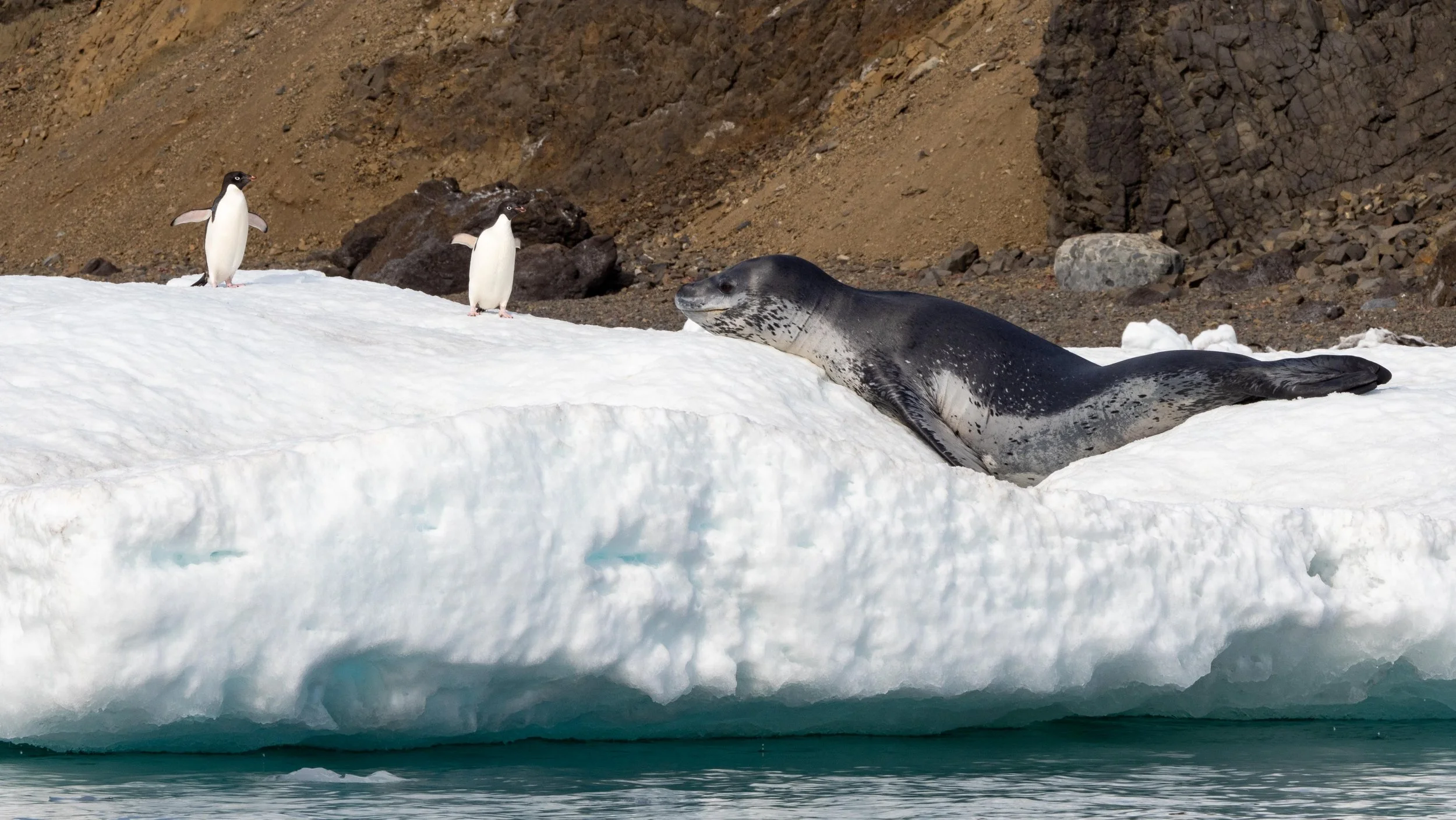
Penguins and Predators in Antarctica
Penguins of all types are abundant in Antarctica. They roam the fast ice, climb the hills, and slide down the glacial slopes on their bellies. They flock to Antarctica in the austral summer to build nests and lay their eggs in the safety of a continent without land predators. The adults have nothing to fear, until they enter the water. On land they are curious and often investigate a visitor with a camera, but once they dive into the waves they become cautious and evasive, and for good reason- hunters patrol the southern ocean.
Antarctica is characterized by giant landscapes of snow and ice. An environment that seems impossible to live in is actually home to a diverse cast of characters in the short summer months.
Penguins, like this Adélie (Pygoscelis adeliae), fearlessly roam the ice among crabeater seals (Lobodon carcinophaga).
On land and ice the penguins are safe. They can easily out maneuver a hungry leopard seal (Hydrurga leptonyx) but in the water the predators have the advantage.
Eventually, the penguins have to leave the safety of land and ice. They enter the ocean to find food to bring back to their waiting chicks.
Killer Whales (Orcinus orca) and leopard seals (Hydrurga leptonyx) actively hunt these marine birds once they enter the water.
Leopard seals (Hydrurga leptonyx) patrol near the shores of penguin colonies, waiting for young, inexperienced chicks to try their first swim.
The shore line is the most dangerous place for the young penguins. Shallow water makes it hard to out-run or out-dive the waiting hunters.
Once past the shore line, the penguins have a better chance at evasion, but killer whales (Orcinus orca) are an ever-present threat, even in open water.








